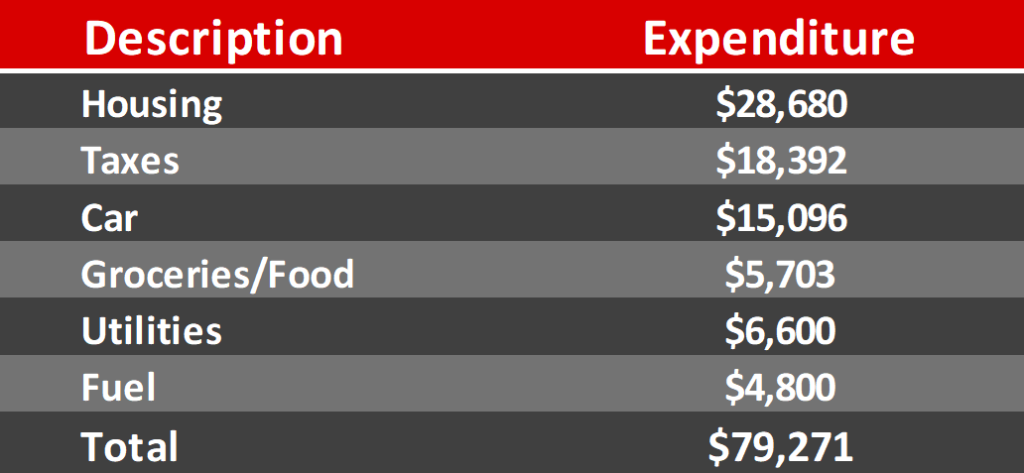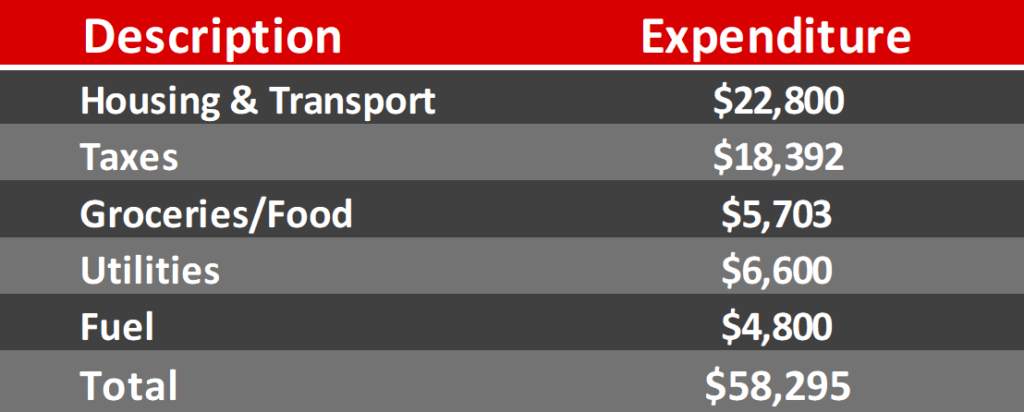How much should I spend on a house?
I want to start by acknowledging what a weird housing market we’re in at the moment.
The pandemic kicked off an unprecedented migration in the United States, fueled by a perfect storm of untethered work locations, historically low interest rates, and a glut of cash in the pockets of most Americans.
And all that cash? Yeah, it was coming from everywhere.
There was a rising stock market, incomes increased rapidly due to low participation in the labor market, and the government was literally sending checks to almost everyone. And all the while we were stuck at home with no way to spend our money for a year or two.
The bottom line is that it is not an easy time to buy a house.
However, what I want to emphasize is that tough times actually call for a higher degree of scrutiny over the decision to buy a home.
Buying a home is not a decision you should take lightly because a poor choice could wreck your finances for years to come.
How Much House to Buy
Naturally, when most people begin inquiring about the possibility of buying a new home, they’ll ask themselves “How much house can I afford?”
Better yet, they’ll probably go to Google and do a quick web search in order to answer that question.
I was curious how much house Google thinks I can afford, so I ran my income through their mortgage affordability calculator and I was pleased to see that Google suggested a mortgage amount with a monthly payment that represents a reasonable 30% of our household income.
In fact, 30% is the highest amount I recommend you commit to a monthly housing payment (renting or buying and this should include car payments).
We’ll come back to that in a bit, but first here’s the thing…
Most Americans are spending far more than 30% of their income on a house.
According to The Council for Community and Economic Research, the average monthly mortgage payment is $2,390 or $28,680 annually.
Meanwhile, median household income is just below $76,000 annually.
$28,680 of housing expenses is 37.7% of $76,000.
You might think 7.7% of income isn’t that big of a deal. If so, please feel free to mail me $5,852 since it’s not that big of a deal.
For the rest of you who want to understand why 30% is the top of the mark, let me try to explain.
How We Spend Money
It would be incredibly fair to characterize the American economy as “consumer-driven”.
In fact, it would be a bit of an understatement.
Culturally, Americans spend almost every dollar we manage to earn.
I’m speaking in generalizations, but for the most part, if we have an extra dollar lying around we have a talent for finding a way to spend it.
I’m not saying this to shame anyone, but it’s important to understand that mindset because it can have debilitating effects on our finances if we don’t keep it in check and practice a little discipline.
To illustrate this point, I researched how much the average American household spends on just six basic categories each year.

I’ve already pointed out that the annual median household income is about $76,000.
Clearly, we have a problem here and I haven’t even included $4,028 spent annually on insurance, $3,456 on entertainment, $1,944 on clothes, and $1,692 spent each year on cell phones and accompanying service plans.
There are only a few ways this is possible:
- As Americans, we have a lot of debt.
- There is some error in these numbers.
- These are averages. Where one household overspends, another underspends.
I think parts of the truth lie in all three of these scenarios.
Yes, we have a debt problem. I’d bet many of you agree, but that’s for another post.
Next, I confess the numbers look fishy to me, but not in a way that is helpful in reducing spending.
Just look at groceries and food. Only $5,703 a year? I’ll name my next child after whoever can explain to me how I can feed my household for only $5,703 a year.
Personally, I think point #3 provides most of the explanation here.
Money is quite flexible. It comes and goes easily and where we overspend in one area, we can simply balance that out by underspending in another.
The “average” house that is spending over $15,000 a year on car payments isn’t necessarily representative of all households. In fact, I wouldn’t be surprised if the true average was much lower because households with paid-for cars probably weren’t included in this data.
But before I spend too much time arguing against the ultimate point I’m trying to make, let me point out that even if we tweaked several of these stats in one direction or another it will remain abundantly clear that many households are simply spending far too much.
And, if we’re looking to significantly reduce the amount we spend each month, the easiest way to do that consistently is to reduce the amount we spend on the largest items.
By focusing on housing and cars, we can get the biggest impact relative to the amount of effort and discipline we have to put forth to produce a meaningful change.
In other words, housing and cars are only part of the problem, but they are a big part of the problem.
If you add up the amounts I’ve listed in the table, these two categories could account for 58% of household spending for the average American.
In fact, if we revise the table so that the amount spent on housing and transportation is capped at 30% of income, the total spent for these 6 categories falls to a much more palatable $58,295.

Look, mom! Now we even have room for insurance, entertainment, clothes, and cell phones again!

Could we save money on groceries, utilities, and fuel? Sure. But you’re more likely to let those costs creep up again, whereas a mortgage or car are kind of “locked in” expenses.
Besides, even if you trim those expenses until it hurts, they won’t have the same level of impact as a reduced mortgage or eliminated car payment.
But most importantly, by spending less on these two items we have something left to set aside for retirement.
Because You Need to Save & Invest
And, for me, that’s the primary reason to keep your housing and transportation costs in check.
The fact is time is one of the critical components to building wealth (money being the other).
If you aren’t able to save and invest early in your earning years, you will pay for it when you are older and trying to catch up.
As a quick example, if we take the difference between our $76,000 median income and our revised spending total ($6,585) and invest that amount annually for 10, 20, 30, 40, and 50 years, here’s what it would be worth:


There are two primary points I want to make here.
First, things don’t really get exciting on this graph until after year 40. But, you can’t get to year 40 without going through years 1 through 49.
This means you have to start as early as possible.
The other point is that $773,018 probably won’t be enough to finance a remarkable retirement 50 years from now.
No, I didn’t account for inflation, but I also didn’t assume your contribution rate would increase over time. You can view this in today’s dollars and should be able to contribute more as your income increases.
But this is also why I don’t recommend saving just $6,585 each year.
Instead, I recommend saving at least 15% to 25% of your income each year for retirement. On a $76,000 annual income, this would be $11,400.
To contribute at that level, you need to cap the amount you spend on housing and cars at a combined 30%.
Then, as your income increases but your mortgage stays the same, direct more and more of your income into retirement savings.
Also, I recommend just paying cash for your cars and driving them as long as possible because cars are a financial killer.
Limiting the cost of these two items really is a critical step to long-term financial success. Anytime I speak with someone about budgeting this is where I focus first.
Wrap Up
Even though I recommend limiting your housing and transportation costs to 30% of your income, you would do well to spend even less if you can.
Houses and cars are big commitments. The less of your income that is consumed by these two items, the more freedom you’ll feel with your finances.
Also, buying and selling homes is expensive. If you’re set on buying a house be sure it’s a place you can stay for at least 5 years so appreciation will cover moving and closing costs.







